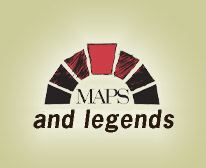
Industry experts estimate that more than $7 billion will be spent on new facilities for professional sports teams before 2006.
Most of this $7 billion will come from public sources. . . . State and local governments pay even larger subsidies than Washington. Sports facilities now typically cost the host city more than $10 million a year. Perhaps the most successful new baseball stadium, Oriole Park at Camden Yards, costs Maryland residents $14 million a year. Renovations aren't cheap either: the net cost to local government for refurbishing the Oakland Coliseum for the Raiders was about $70 million. . . .
. . . "Build the Stadium--Create the Jobs!" Proponents claim that sports facilities improve the local economy in four ways.
Advocates argue that new stadiums spur so much economic growth that they are self-financing: subsidies are offset by revenues from ticket taxes, sales taxes on concessions and other spending outside the stadium, and property tax increases arising from the stadium's economic impact.
Unfortunately, these arguments contain bad economic reasoning that leads to overstatement of the benefits of stadiums. Economic growth takes place when a community's resources--people, capital investments, and natural resources like land--become more productive. Increased productivity can arise in two ways:
Building a stadium is good for the local economy only if a stadium is the most productive way to make capital investments and use its workers.
In our forthcoming Brookings book, Sports, Jobs, and Taxes, we and 15 collaborators examine the local economic development argument from all angles: case studies of the effect of specific facilities, as well as comparisons among cities and even neighborhoods that have and have not sunk hundreds of millions of dollars into sports development. In every case, the conclusions are the same.
Regardless of whether the unit of analysis is a local neighborhood, a city, or an entire metropolitan area, the economic benefits of sports facilities are de minimus.
Read the entire article
What's wrong with the domed stadium
Return to top of page
Edited by Rob Collins